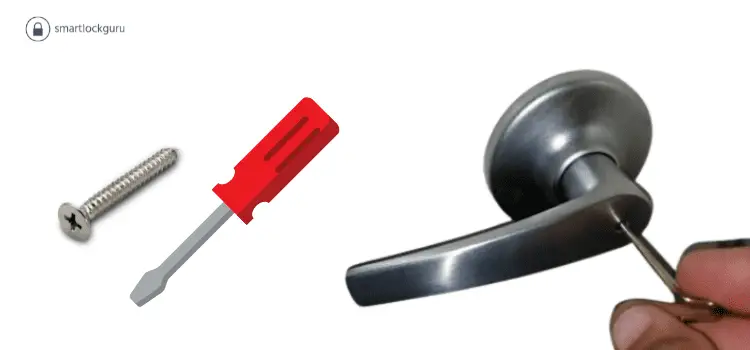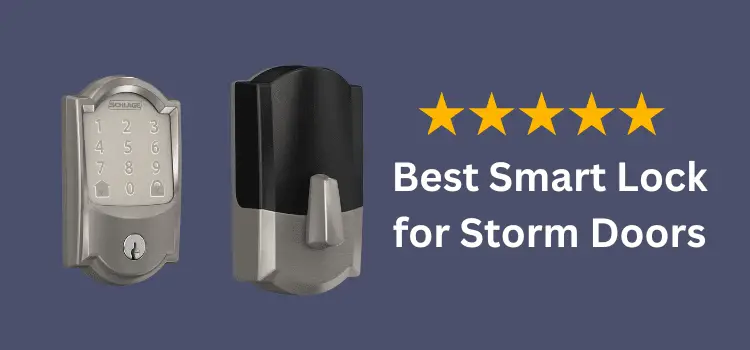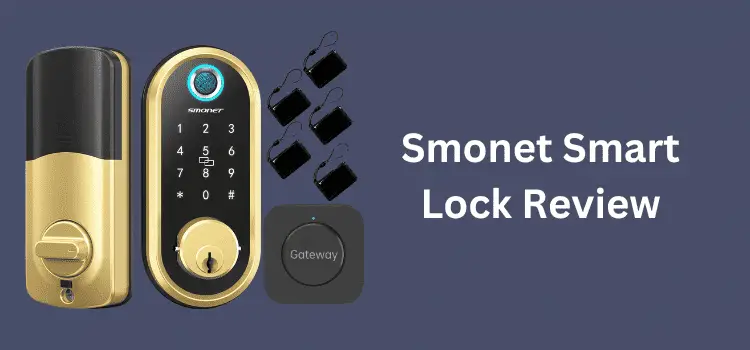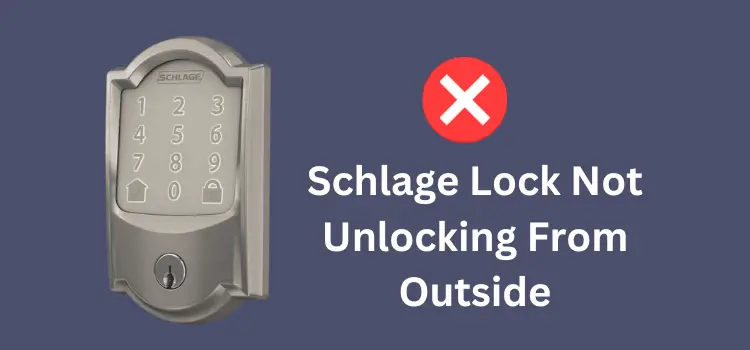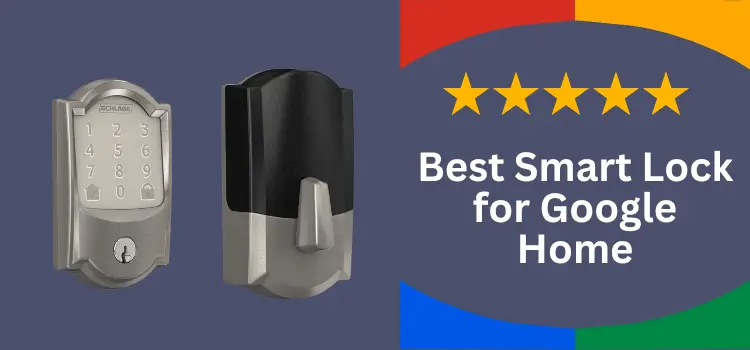Locking yourself out of your home is never enjoyable. But don’t worry! There are a few ways to unlock a deadbolt from the outside without a key.
Deadbolts have fewer vulnerabilities than classic doorknob latch locks, but they are still quite simple to circumvent with the appropriate approach.
In this post, we’ll go over various popular methods for unlocking pin tumbler deadbolts, including lock picking, lock bumping, and piercing the lock.
With little time and effort, you should be able to unlock almost any high-quality deadbolt without a key. So, the next time you get locked out, remember these instructions, and you’ll be back inside in no time.
Let’s get to it!
Table of Contents
1. Select the Lock
Lock picking is the original and most effective method for unlocking a deadbolt without a key. It is a common solution for people who don’t want to damage their door or lock.
Lock picking is a simple technique to learn—the fundamentals required to pick a conventional pin tumbler deadbolt may be mastered in 10 minutes. All you really need to know is the fundamentals of how locks operate and some of the strategies used to pick them.
In addition to this fundamental understanding, you’ll need two lock picking tools, a lockpick and a tension wrench.
If you’re in a panic and have the ingredients, you can manufacture your own lock picking tools out of bobby pins, paperclips, or other stiff and thin metals.
However, makeshift lockpicks are too huge to fit through the keyhole. In this instance, you’ll require a professional or hobbyist lock pick set built for small or parametric keyways.
Check out our beginning lock picking kits to get the perfect everyday carry set, and you’ll never be locked out again! You can even carry a lock pick set in your wallet in case of an emergency!
If you’d want to try lock picking, I’ve produced several highly detailed guides on how to pick locks using various tools, including animations and step-by-step instructions.
There are certain disadvantages to this strategy. If you’re using a high-security deadbolt or your lock has anti-pick measures like security pins, you’ll probably be unable to pick it without a lot of practice.
Furthermore, the internal components of locks can be fragile, and if you’re unlucky, you might break something, such as snapping a spring.
Only pick the lock if:
- You own the lock (unless you rent it).
- You accept that there is a small chance you will damage the lock.
Lock picking has downsides, yet it remains a strong method of unlocking a deadbolt without a key.
2. Bump the Lock
Lock bumping is another efficient method for overcoming deadbolts without using the original key.
Lock bumping is a process in which a grinded-down key known as a “bump key” is chopped to its maximum depth.
You can purchase pre-made bump keys for your specific lock online, or you can create your own.
To make your own, you’ll need another key that you don’t mind destroying and that fits into the deadbolt’s keyway, as well as a tool to grind that key down. Both of these products are readily available at most local hardware stores.
Watch the video below to learn how to construct a bump key.
As soon as you possess your bump key, it’s the moment to start the task!
Insert it fully into the key, then slowly pull it back until you hear the lock’s rearmost pin drop. Then use a light turning pressure on the key.
Strike the back of the key with a rubber mallet or your palm, abruptly forcing it into the lock. The teeth of the key will strike the pins, propelling them upward. If done correctly and with a little luck, the pins will entirely exit the lock’s plug, allowing the lock to open.
This approach is effective against the majority of pin-tumbler deadbolts, but it may not always work. Higher-quality deadbolts may include anti-bump mechanisms that prevent lock bumping from being successful.
If you want to understand more about lock bumping or how to prevent it from happening to your locks, check out my detailed guide on how to bump locks for a deeper dig.
3. Drill the Lock
If you don’t mind entirely ruining your deadbolt, you might try drilling the lock.
There are multiple methods for successfully drilling a lock, as well as numerous areas in which you might target your drill. You can drill the shear line, the bottom stack of pins (key pins), the top stack of pins (driver pins), the springs, and even the screws that secure the deadbolt to the door.
The best way to determine which strategy to utilize in which case is to understand how a lock works and the most frequent anti-drill countermeasures used. Anti-drill components are often tougher steel or ceramic elements designed to safeguard sensitive sections.
For example, if you peek into the keyway and see a steel front pin rather than a brass one, your lock is most likely made with hardened anti-drill pins, which are more difficult to drill.
However, because low-cost deadbolts rarely incorporate anti-drill countermeasures, you can most certainly target the shear line by drilling directly above the keyhole.
To drill a lock, take these steps:
- Choose a drilling area and start with a small drill bit to create a short beginning hole to guide a larger bit.
- Begin drilling with a 1/8th inch drill bit until you feel it bore through five pins.
- Switch to a 1/4″ drill bit and do the process again.
- Insert a flathead screwdriver into the keyhole and try to turn the lock.
whether it does not open, examine inside the hole to see whether there is a sixth pin. If there is another pin, drill a little deeper to completely remove it before attempting to open the lock again.
If there is no additional pin and the lock does not open, you may need to use a slightly larger drill bit to cause more damage!
4. Break the glass.
If there is a glass panel on the door you are attempting to circumvent, or if there is a window within arm’s reach of the deadbolt’s thumbturn, you can break the glass and reach through to unlock the lock.
Unless there is an emergency, I do not suggest this technique. Reaching through a shattered window could cause more issues than you started with. Not to mention that replacing glass can cost more than phoning a locksmith.
Speaking of locksmiths!
5. Make a locksmith appointment.
If all else fails, you may have to contact a locksmith to unlock the door. Most locksmiths have the gear and skills needed to open almost any door without destroying the lock.
Furthermore, locksmiths often charge significantly less than the cost of replacing a broken lock, door, or window. The average cost of being locked out is approximately $150, however this will vary depending on your location and the locksmith. You may learn more about calling a locksmith and how much it costs here.
If you’re stranded and don’t know what to do or don’t have the proper tools, your best option may be to contact a locksmith.
Why Deadbolts Are A Little Difficult to Bypass
Most external doors have two types of locks, a deadbolt and a doorknob (sometimes known as a “deadlatch”).
A spring is used in doorknob locks to push and retain a latch into the doorframe when the door is closed.
Because the latch is held in place by a spring, it is vulnerable to any attack capable of retracting the spring. A popular method known as loiding involves inserting a thin piece of material (such as a credit card) between the crevices of the door and compressing the spring latch.
Deadbolt locks, on the other hand, do not employ a spring. Rather, they must be mechanically retracted using a key or thumbturn. As a result, they cannot be loided, making it far more difficult to control the bolt directly.
How to Prevent Being Locked Out Again
Getting locked out is terrible, but there are certain steps you can take to reduce the likelihood of it happening again.
1. Keep a key hidden outside your home in a safe place.
Your best solution is to keep a key hidden outside in a safe location. This may be in a flower pot on your porch, beneath a rock key lock box in your garden, or anywhere else inconspicuous and out of sight.
If you have a key hidden outside, you can simply retrieve it and get back into your home. There is no need to call a locksmith or fuss with the lock!
2. Create a copy of your key and distribute it to a friend or family member.
If you don’t want to hide a key outside, consider giving a backup key to a trustworthy friend or neighbor. If you ever get locked out, you can just ask them to let you inside your home.
3. Substitute your existing deadbolt with a lock that doesn’t require a key.
A third alternative is to employ a keyless entry system, such as a keypad or smart lock. Keyless entry systems do not require a physical key, so you never have to worry about being locked out again.
Here is the video guide to Unlock a Deadbolt Without a Key
FAQ: Unlock a Deadbolt Without a Key
1. Which way does a deadbolt unlock?
- Typically, to unlock a deadbolt, you turn the key or thumb turn counterclockwise. However, this can vary depending on the lock’s design and installation. Always check the specific instructions for your lock model.
2. How do you unlock a deadbolt from the outside with a screwdriver?
- Unlocking a deadbolt with a screwdriver from the outside is generally not advisable as it can damage the lock and is considered a method of forced entry. It’s recommended to use the appropriate key or contact a professional locksmith if you’re locked out.
3. Can a burglar unlock a deadbolt?
- While deadbolts provide a higher level of security compared to basic locks, they are not entirely burglar-proof. Experienced burglars may use various methods like lock picking, bump keys, or brute force to unlock a deadbolt. To enhance security, consider using high-grade locks and additional security measures.
4. How do you unlock a stuck deadbolt?
- If a deadbolt is stuck, try lubricating the lock with graphite or a silicone-based lubricant. Gently wiggle the key in the lock to loosen any jam. If it still doesn’t unlock, check for alignment issues with the door and the bolt. If the problem persists, it’s best to consult a locksmith.
Remember, for any lock-related issues, especially if security is a concern, it’s advisable to seek assistance from a professional locksmith.
Conclusion
So there you have it. Whether you’re locked out of your house or simply want to be prepared in the event of an emergency, you now know how to unlock a deadbolt without a key.
We considered four options: lock picking, lock bumping, drilling the lock, and shattering a nearby window. Some of these solutions may not work against high-security door locks; in that case, you may always call a locksmith.
To avoid getting locked out in the future, hide a key outside, give a spare key to a friend or neighbor, or upgrade to a keyless entry system.
You might also like:
1- Schlage Keypad Lock Keeps Spinning-Troubleshooting and Fixing
2- Reliabilt Electronic Deadbolt Programming Instructions: A Comprehensive Guide
3- Kwikset 917 vs Kwikset 955 – A Comprehensive Comparison

